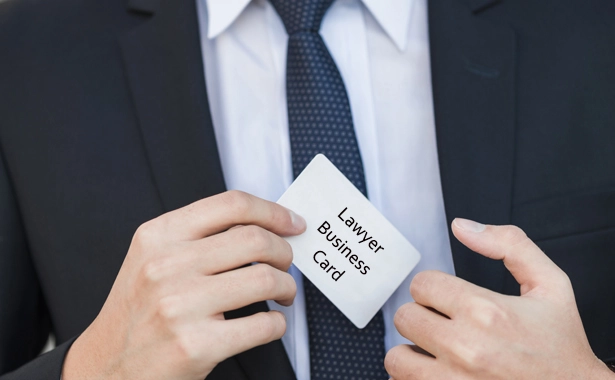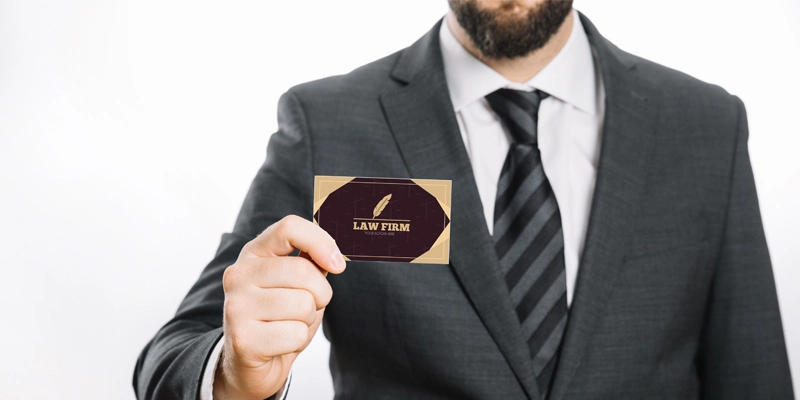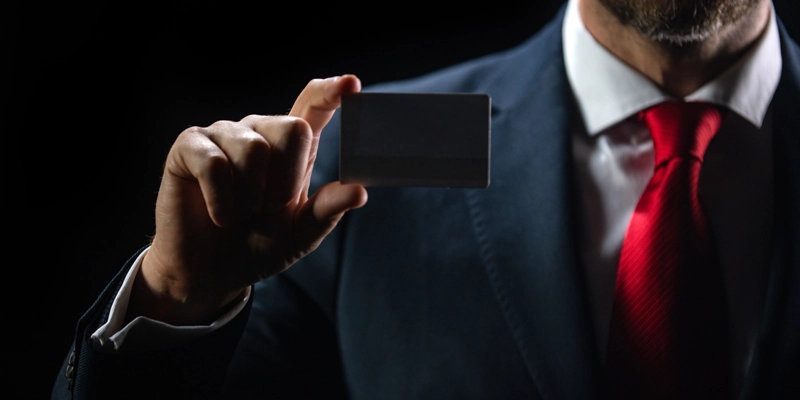Contents
In the legal profession, first impressions are crucial, and a well-designed business card can be a powerful tool for making a memorable impact. Lawyer business cards serve not only as a contact reference but also as a reflection of your professionalism and brand. This guide will explore the essential elements and innovative ideas to create standout lawyer business cards.
Importance of Business Cards in the Legal Profession
In the legal profession, where reputation and first impressions are crucial, business cards play a vital role. These small cards often serve as the first physical representation of a lawyer’s professional identity that potential clients or colleagues encounter. Lawyer business cards are more than just a means of providing contact details; they are an essential branding tool that can create a lasting impression and set the tone for future engagements.
A well-crafted lawyer business card helps establish credibility and trust, which are essential in the legal field. When exchanged in meetings, at networking events, or in casual encounters, a business card provides a tangible link to your practice. This personal touch can be pivotal in being remembered. Additionally, these cards succinctly convey your professional persona, reflecting your firm’s style, values, and meticulousness. In an industry reliant on word-of-mouth and personal referrals, business cards facilitate the easy sharing of contact information and stand out in an increasingly digital, impersonal world.
First Impressions and Professional Branding
First impressions are critical in the legal profession, where trust and credibility are indispensable. Your lawyer business card often acts as the initial point of contact with potential clients, partners, or colleagues, making it an essential aspect of professional branding. A meticulously designed business card can convey extensive information about your legal practice, far beyond basic contact details.
A professional business card immediately signals your competence and attention to detail. Handing over a well-designed card printed on quality stock suggests that you prioritize quality and precision in your work, fostering trust and confidence—key qualities in the legal field where clients must feel secure. Consistent branding across all materials, including business cards, enhances recognition and recall, making your practice more memorable. Unique design elements such as logos or taglines can spark conversations and foster engagement, helping you build relationships and expand your network. Investing in high-quality materials and finishes, like embossing or foil stamping, adds a memorable tactile experience, reinforcing your commitment to excellence and reflecting positively on your professional capabilities.
Key Elements of an Effective Lawyer Business Card
Creating an effective lawyer business card involves more than just slapping your name and contact details on a piece of cardstock. It requires thoughtful consideration of the essential information, design principles, and the overall look and feel to ensure it represents your professional brand accurately and effectively. Here are the key elements to consider:
Essential Information to Include
- Name and Title: Clearly display your full name and professional title. This establishes your identity and professional standing immediately.
- Law Firm Name: Include the name of your law firm to associate yourself with a recognized brand.
- Contact Information: Provide multiple ways to contact you, including your phone number, email address, and office address. Make sure these are up-to-date and easy to read.
- Website URL: Adding your firm’s website URL allows recipients to learn more about your services and credentials at their convenience.
- Social Media Profiles: If relevant and professional, include links to your LinkedIn profile or other professional social media accounts to showcase your online presence.
Design Principles: Simplicity, Readability, and Professionalism
- Simplicity: A cluttered business card can be overwhelming and difficult to read. Keep the design clean and straightforward, focusing on essential information only. This not only makes the card more readable but also more professional.
- Readability: Use fonts that are clear and easy to read. Avoid overly decorative fonts that might look attractive but hinder readability. Ensure that the text size is large enough to be read without strain.
- Professionalism: The overall design should reflect the seriousness and decorum of the legal profession. Choose a design that is elegant and understated rather than flashy or whimsical.
Choosing the Right Material and Finish
Paper Quality Options
The quality of the paper used for your business card speaks volumes about your attention to detail and professionalism. Consider using a heavier stock that feels substantial and durable. Premium options, such as linen or cotton paper, can add a touch of sophistication.
Special Finishes: Embossing, Foil Stamping, and Matte vs. Glossy:
- Embossing: Adding an embossed element can create a tactile experience that makes your card stand out.
- Foil Stamping: Foil stamping adds a touch of elegance and can be used to highlight specific elements, like your name or logo.
- Matte vs. Glossy: Matte finishes provide a sophisticated look and are easier to write on, while glossy finishes offer vibrant colors and a sleek appearance. Choose based on the impression you want to convey.
Design Tips for Standout Lawyer Business Cards
- Selecting the Right Font and Color Scheme: Use professional fonts such as Serif or Sans Serif that are easy to read. Choose a color scheme that reflects your brand, typically neutral tones for a more professional appearance. Avoid using too many colors, as this can look unprofessional.
- Incorporating Logos and Brand Elements: Your law firm’s logo should be prominently displayed but not overwhelming. Consistency with other branding materials is crucial to create a cohesive brand identity.
- Balancing Text and White Space: White space is an essential design element that improves readability and makes your business card look more organized. It helps to highlight the most important information and prevents the card from looking cluttered.
Choosing the Right Material and Finish
Selecting the right material and finish for your lawyer business card is crucial for making a strong first impression. The choice of paper quality and special finishes can significantly impact how your card is perceived, reflecting your professionalism and attention to detail. Here’s a detailed guide on making the best choices for your lawyer business cards.
Paper Quality Options
Standard Paper:
Standard paper stock is a common choice due to its affordability and functionality. While it may not have the luxurious feel of premium options, high-quality standard paper can still look professional if well-designed.
Premium Paper:
Premium paper stock, such as thicker card stock or specialty papers like linen or cotton, offers a more substantial feel and durability. This option conveys a higher level of professionalism and can leave a lasting impression on recipients. Premium paper is ideal for lawyers looking to emphasize their commitment to quality and detail.
Recycled Paper:
Eco-friendly options are becoming increasingly popular. Recycled paper not only appeals to environmentally conscious clients but also communicates a commitment to sustainability. It shows that your practice is modern, responsible, and forward-thinking.
Special Finishes: Embossing, Foil Stamping, and Matte vs. Glossy
Embossing:
Embossing adds a raised texture to your business card, creating a tactile experience that can make your card more memorable. It is often used to highlight specific elements such as your name, logo, or firm’s name. Embossed details give your card a sophisticated and high-end feel.
Foil Stamping:
Foil stamping uses a metallic foil to add shine and elegance to your business card. Commonly available in gold, silver, or copper, foil stamping can make your card stand out and convey a sense of luxury and exclusivity. It’s an excellent choice for highlighting key information or adding a touch of class to your design.
Matte vs. Glossy Finish:
- Matte Finish: Matte finishes offer a smooth, non-reflective surface that exudes sophistication and professionalism. They are also easier to write on, making them practical for adding handwritten notes or appointments.
- Glossy Finish: Glossy finishes, on the other hand, provide a shiny, reflective surface that makes colors appear more vibrant. They are more resistant to dirt and moisture but can be harder to write on. Glossy cards are ideal if you want a sleek, modern look.
Combining Materials and Finishes
For a truly standout business card, consider combining different materials and finishes. For example, you might choose a premium paper with an embossed logo and foil-stamped name for a card that is both tactile and visually striking. This combination can create a multi-sensory experience that reinforces your brand’s commitment to quality and attention to detail.
Cost Considerations
While premium materials and special finishes can elevate your business card, it’s essential to balance cost with the benefits. High-end options are more expensive, but they also create a stronger impact and can lead to better networking results. Consider your budget and the impression you wish to make when deciding on materials and finishes.
Design Tips for Standout Lawyer Business Cards
Creating a standout lawyer business card involves more than just including your contact details; it requires a thoughtful design that balances aesthetics with functionality. Here are key design tips to ensure your business card not only catches the eye but also conveys professionalism and brand consistency.
Selecting the Right Font and Color Scheme
Font Choices:
- Professional Fonts: Choose fonts that are clean, professional, and easy to read. Serif fonts like Times New Roman or Sans Serif fonts like Arial and Helvetica are excellent choices for a professional appearance. Avoid overly decorative or script fonts that can be difficult to read and detract from the card’s professionalism.
- Font Size: Ensure the font size is large enough to be legible. Typically, a font size of 10-12 points for the main text is recommended, with slightly larger sizes for headings or your name.
Color Scheme:
- Brand Consistency: Use a color scheme that aligns with your firm’s branding. Consistent use of colors across all branding materials, including business cards, helps reinforce your brand identity. Neutral tones such as black, white, and gray often work well for a professional look.
- Contrast and Readability: Ensure there is sufficient contrast between the text and the background. High contrast improves readability, making it easier for recipients to read your contact details at a glance. Avoid color combinations that can strain the eyes, such as light text on a light background.
Incorporating Logos and Brand Elements
Logo Placement:
- Prominent and Balanced: Your law firm’s logo should be prominently displayed but not overwhelming. Place it in a position where it’s easily noticeable, such as the top corner or center of the card. Ensure it balances with other elements and doesn’t clutter the design.
- Consistency: The logo should be consistent with other branding materials, both in color and style. This helps in maintaining a cohesive brand identity across different platforms.
Brand Elements:
- Taglines and Slogans: If your firm has a tagline or slogan, include it on your business card to reinforce your brand message. Ensure it is concise and aligned with your professional image.
- Visual Hierarchy: Create a visual hierarchy by using different font sizes and weights. Your name and title should stand out, followed by your contact information and other details.
Balancing Text and White Space
White Space:
- Clarity and Focus: White space, or negative space, is the empty area around the text and design elements. It enhances readability by preventing the card from looking cluttered and helps to direct attention to the most important information.
- Professional Look: Adequate white space gives your business card a clean, organized, and professional appearance. It allows the design elements to breathe and makes the card more visually appealing.
Information Layout:
- Prioritize Information: Prioritize essential information to ensure it’s easily accessible. Avoid cramming too much text onto the card. Instead, focus on key details like your name, title, firm’s name, and contact information.
- Alignment: Ensure all text and elements are well-aligned. Consistent alignment adds to the card’s neat and professional look.
Using Design Tools and Software
Professional Design Tools:
- Software Options: Utilize professional design software like Adobe Illustrator, InDesign, or online tools like Canva for creating your business card. These tools offer templates and design options that can help you create a polished and professional card.
- Templates: Use pre-designed templates as a starting point. Customize them to match your brand’s colors, fonts, and style, ensuring a unique and professional end product.
Innovative Ideas to Make Your Card Unique
In the competitive legal industry, having a distinctive business card can help you stand out and leave a lasting impression. By incorporating innovative design elements and modern features, you can create a memorable and effective lawyer business card. Here are some creative ideas to consider:
Using QR Codes for Digital Connectivity
Benefits of QR Codes:
- Easy Access to Information: QR codes can store a wealth of information and provide a direct link to your digital presence. When scanned, they can lead to your website, LinkedIn profile, or a virtual business card.
- Convenience: They offer a convenient way for recipients to save your contact information on their smartphones without manually entering details. This can enhance the likelihood of follow-ups and ongoing communication.
- Engagement: QR codes can also link to multimedia content, such as introductory videos, client testimonials, or case studies, providing a richer and more engaging experience.
Implementation Tips:
- Placement: Position the QR code in a location that is easily accessible but does not dominate the design. A corner or the back of the card can be ideal.
- Design Integration: Ensure the QR code fits seamlessly with your card’s design. Customize the code’s color to match your brand’s color scheme for a cohesive look.
- Testing: Before printing, test the QR code to ensure it works correctly and leads to the intended digital content.
Unique Shapes and Sizes
Standout Shapes:
- Non-Standard Dimensions: While traditional business cards are typically rectangular, experimenting with different shapes can make your card more memorable. Options include square cards, rounded corners, or even custom die-cut shapes that reflect your practice area or brand personality.
- Tactile Interest: Unique shapes add a tactile element that can capture attention and make your card more interesting to hold and examine.
Size Considerations:
- Portability: Ensure the size remains practical and can fit in standard wallets and cardholders. Oversized cards might stand out, but they can also be inconvenient.
- Proportionate Design: Maintain a balanced design that suits the card’s shape and size, ensuring all information is clearly legible.
Eco-Friendly Options and Sustainable Materials
Sustainable Materials:
- Recycled Paper: Opt for business cards made from recycled paper. This eco-friendly choice not only reduces your environmental impact but also appeals to clients who value sustainability.
- Biodegradable Materials: Explore options like seed paper, which can be planted after use, growing into flowers or herbs. This innovative approach emphasizes your commitment to the environment and creates a unique, lasting impression.
Green Printing Practices:
- Eco-Friendly Inks: Use soy or vegetable-based inks instead of traditional petroleum-based inks. These inks are less harmful to the environment and offer vibrant colors.
- Local Printing: Choose local printers who use sustainable practices, reducing the carbon footprint associated with shipping.
Communicating Your Commitment:
- Subtle Messaging: Include a small icon or text indicating that your business card is eco-friendly. This can enhance your brand’s image as socially responsible and environmentally conscious.
- Sustainability Statement: Briefly mention your commitment to sustainability on the back of the card. This provides additional context and can be a conversation starter.
Common Mistakes to Avoid
When designing your lawyer business card, it’s crucial to be aware of common pitfalls that can undermine your professionalism and impact. Avoiding these mistakes will ensure that your business card effectively represents your brand and leaves a positive, lasting impression.
Overloading with Information
Cluttered Design:
- Less is More: Including too much information can make your card look cluttered and overwhelming. Focus on the essential details: your name, title, law firm name, contact information, and possibly your website or LinkedIn profile.
- Prioritize: Prioritize the most important information and leave out unnecessary details. A clean, minimalist design is more likely to be read and remembered.
Readability:
- Clear Hierarchy: Establish a clear visual hierarchy to guide the reader’s eye. Important elements like your name and title should be more prominent, while secondary information can be in smaller or lighter text.
- White Space: Utilize white space effectively to give your design room to breathe. This enhances readability and makes your card look more professional.
Poor Color Contrast and Font Choices
Color Contrast:
- High Contrast: Ensure there is a strong contrast between the text and background colors. This is vital for readability. Dark text on a light background or light text on a dark background typically works best.
- Brand Colors: Stick to your brand’s color palette, but be mindful of readability. Avoid using light colors on light backgrounds or dark colors on dark backgrounds.
Font Choices:
- Professional Fonts: Use clean, professional fonts that are easy to read. Avoid overly decorative or whimsical fonts that can detract from the professional image you want to convey.
- Font Size and Style: Make sure the font size is appropriate and readable. Titles and names can be slightly larger to stand out, while contact details can be in a smaller, but still legible, size.
Ignoring the Importance of Proofing
Proofreading:
- Spelling and Grammar: Errors in spelling, grammar, or punctuation can make a poor impression. Proofread your card carefully to ensure there are no mistakes.
- Accurate Information: Double-check all contact information for accuracy. Incorrect phone numbers, email addresses, or website URLs can frustrate potential clients and harm your credibility.
Multiple Reviews:
- Fresh Eyes: Have multiple people review your business card before finalizing it. A fresh pair of eyes can often catch mistakes that you might have overlooked.
- Professional Proofing: Consider hiring a professional proofreader or using proofreading software to ensure your card is error-free.
Skimping on Quality
Material Quality:
- High-Quality Stock: Invest in high-quality paper stock for your business card. A flimsy card can give the impression that you cut corners, while a sturdy, high-quality card conveys professionalism and attention to detail.
- Premium Finishes: Consider premium finishes like embossing, foil stamping, or a matte finish to add a touch of elegance and distinction.
Printing Quality:
- Professional Printing: Use a reputable printer to ensure high-quality printing. Poor print quality can detract from even the best design.
- Consistent Colors: Make sure the colors are consistent and true to your brand. Inconsistent or faded colors can make your card look unprofessional.
Not Updating Your Card Regularly
Current Information:
- Regular Updates: Ensure your business card information is always up-to-date. If you change your phone number, email address, or office location, update your cards immediately.
- Reflecting Changes: Your card should reflect any changes in your branding or professional status. Regularly review and refresh your design to keep it current and relevant.
Consistent Reprints:
- Avoid Outdated Cards: Avoid handing out old cards with outdated information. It’s better to wait for a new batch than to give out incorrect details.
In case that this blog was useful to you, I recommend visiting this blog regarding another guide for lawyers.
Crafting Your Professional Identity: The Final Word on Lawyer Business Cards
Investing in high-quality business cards is essential for any lawyer aiming to make a powerful first impression. By focusing on simplicity, readability, premium materials, and innovative design elements, you can create a card that not only conveys professionalism but also stands out in the legal market. Avoid common pitfalls like cluttered designs and poor quality, and draw inspiration from successful examples to craft a card that truly represents your brand.
Encourage readers to explore how RunSensible can support their legal practice with tools and services for professional branding and client management. Include a link to a consultation or demo of RunSensible’s software to help lawyers streamline their practice and improve their professional image.
FAQs
1. What information should be included on a lawyer business card?
Essential information to include on a lawyer business card consists of your full name, professional title, law firm name, phone number, email address, office address, and website URL. Including social media profiles like LinkedIn is also beneficial if they are professionally relevant.
2. How can I make my lawyer business card stand out?
To make your lawyer business card stand out, focus on a clean, minimalist design with high-quality materials. Incorporate special finishes like embossing or foil stamping for a touch of elegance. Unique shapes, QR codes for digital connectivity, and eco-friendly materials can also enhance your card’s appeal and memorability.
3. What are common mistakes to avoid when designing a lawyer business card?
Common mistakes to avoid include overloading the card with information, choosing poor color contrasts and unreadable fonts, ignoring the importance of proofreading for errors, skimping on material quality, and not updating your card regularly to reflect current information and branding.
Disclaimer: The content provided on this blog is for informational purposes only and does not constitute legal, financial, or professional advice.








